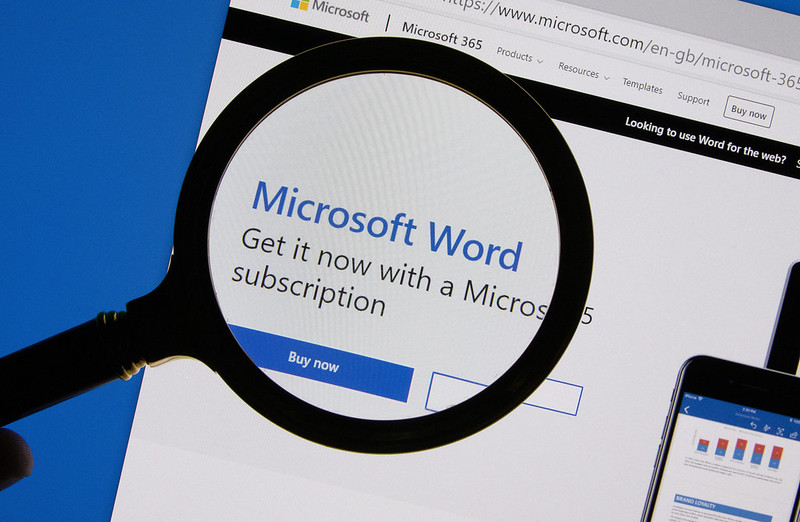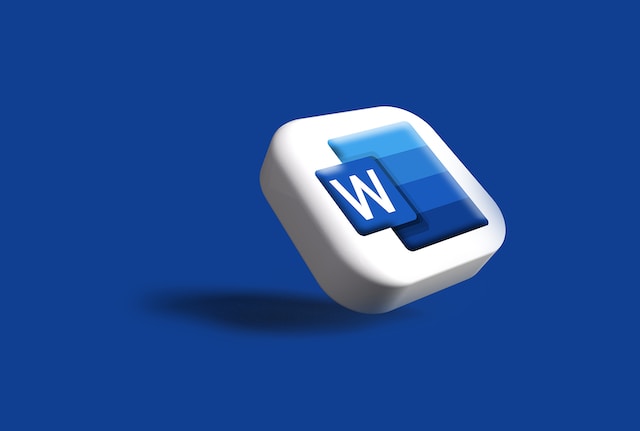DOC is an older Microsoft Word file format using binary code, while DOCX is a newer file format based on open XML code. DOCX is smaller, more compatible, and more secure.
What is a doc file?
A DOC file is a document created using Microsoft Word, one of the most popular word processing programs in the world. It was first introduced in 1983 as part of the initial release of Microsoft Word and has since undergone numerous updates and improvements.
DOC files are saved with a .doc extension and can contain text, images, tables, charts, and other formatting elements. In its early versions, it had limited features compared to modern-day word processors but still allowed users to create basic documents.
One significant disadvantage of DOC files is that they tend to be larger than their more modern counterparts like DOCX. This makes them less efficient when it comes to storage space on your computer’s hard drive or cloud-based storage services.
Despite this drawback, many people still prefer working with DOC files because they are compatible with older versions of Microsoft Word which may not support newer formats such as DOCX. Additionally, some people find that the simplicity and familiarity offered by these old-school formats make them easier to work with than newer ones.
What is a docx file?
(Photo By Jernej Furman on Flickr)

A DOCX file is a document file type that was introduced in Microsoft Office 2007 as an alternative to the older .doc format. This newer version of the file extension is based on XML, which stands for Extensible Markup Language.
One of the main differences between the DOC and DOCX formats is that while both are used for word processing, only DOCX files can store images and other objects inside them directly. This means that if you’re working with a document containing graphics or multimedia content, you may want to use this new format instead of its predecessor.
Another benefit of using the DOCX format over others like RTF (Rich Text Format) or TXT (Plain Text) is that it allows users to add more advanced formatting options when creating documents. For instance, users can now take advantage of improved fonts and styles, page layouts, themes and color schemes among other things.
While there are some minor drawbacks associated with using this newer file type such as compatibility issues with older software versions; its benefits far outweigh these concerns. As such, many people prefer to save their work in this latest Word Document format so they can take full advantage of its features.
Doc Vs. docx – Key differences
One of the most significant differences between Doc and Docx files is their file extension. While DOC is a file extension associated with Microsoft Word’s older versions, DOCX has replaced it as the default file format for newer versions.
Another important difference lies in their structure. A Doc file uses a binary format, which means that its data is stored in a single block of code. On the other hand, a Docx file uses an open XML (Extensible Markup Language) format, which makes it much more flexible and easier to work with.
In terms of size, Docx files are smaller than Docs because they use compression technology to reduce overall storage requirements. Moreover, this compression technique also helps improve loading times when opening large documents on slow computers.
Docx files also come equipped with better security features compared to Docs. They have built-in encryption techniques that protect them from viruses and malware attacks while ensuring confidentiality and privacy.
Compatibility issues are another crucial difference between these two formats. Since many people still use older versions of Word software like 2003 or XP, opening up new .docx files often becomes problematic for them since they need specific software updates before accessing them properly.
Understanding key differences between these document types can help make informed decisions about what type of document best meets your needs based on your purpose and audience needs!
How to convert a doc to a docx
Converting a DOC file to a DOCX is quite easy, and can be accomplished with just a few clicks. You don’t need any special software or technical skills to do it.
Firstly, open the Microsoft Word application on your computer. Then click “File” and select “Open”. Locate the DOC file you want to convert and then double-click it.
Next, click “File” again and select “Save As”. In the dropdown menu that appears, choose “.docx” as the new format for your document. Give your new file a name and hit save!
If you have multiple DOC files that need converting, you can use batch conversion tools available online which make the process even easier! Simply drag-and-drop all of your files into one folder before using these tools.
It’s important to note that when converting from DOC to DOCX there may be some formatting changes in certain cases – so always check over your newly converted documents carefully before sharing them with others.
How to convert a docx to a doc
If you ever find yourself needing to convert a docx file to a doc format, it’s relatively easy with Microsoft Word. Here are the steps:
- Open your document in Word.
- Click on “File” and then select “Save As”.
- In the drop-down menu for “Save as type”, select “.doc” instead of “.docx”.
- Rename your document if necessary, then click on “Save”.
That’s it! Your file is now saved as a .doc format.
It’s important to note that there may be some formatting differences between the two formats, so make sure to check over your converted document carefully before sending it out.
If you have multiple documents that need converting, you can also consider using an online conversion tool or downloading batch conversion software for more efficiency.
Converting from docx to doc is a straightforward process that can come in handy when collaborating with others who may not have access to newer versions of Microsoft Word or other word processing programs.
Why do we use DOCX instead of DOC?
DOCX files have rightly gained popularity and surpassed the usage of DOC files. One of the primary reasons why we prefer to use DOCX instead of DOC is compatibility. Microsoft Office software has evolved over time, and so have its file formats.
The older version, DOC format was designed for Microsoft Word 97-2003. However, with the introduction of newer versions like Word 2010 onwards, Docx became more prevalent as it could support all new features introduced in these versions.
Another reason why people now prefer using docx is that it takes up less space than a typical doc file. This compression feature comes in handy when you need to send large files via email or share them on cloud storage platforms.
Furthermore, docx is much safer than doc as it helps protect your computer from viruses that often come attached with old documents created in .doc format.
Businesses tend to favor Docx as they are compatible with other productivity tools such as Google Docs and OpenOffice which can help streamline their work processes in an increasingly digital world.
The advantages of DOCX files
DOCX files have become the standard format for Microsoft Word documents since the release of Microsoft Office 2007. Here are some advantages of using DOCX files over other formats.
Firstly, DOCX supports more advanced features such as dynamic text wrapping and improved support for graphics. This can make your document look more professional and visually appealing.
Secondly, DOCX files are smaller in size than their predecessors, making them easier to store and share. Reduced file sizes also mean faster upload and download times when sharing online or through email attachments.
Thirdly, DOCX is compatible with a wide range of devices and software applications that support Microsoft Office products. This compatibility ensures that your documents will be accessible to anyone who needs to view or edit them.
Another advantage of using DOCX is its built-in security features which help protect sensitive information from unauthorized access or modification. These include password protection options, digital signatures verification and restricted editing permissions.
These benefits make it clear why businesses around the world have adopted this format as their preferred choice for document creation and sharing.
The disadvantages of Doc Files
Doc files, the older version of Microsoft Word documents, have been used for decades. They offer a range of benefits like ease of use and compatibility with different versions of Microsoft Office. However, these files also come with some disadvantages.
One major disadvantage is that doc files can easily get corrupted, leading to data loss. Additionally, they have file size limitations which could restrict how much content you can include in the document.
Another issue is that doc files are not as secure as their newer counterpart – DOCX. Doc files do not support password protection or other security features which means that anyone who has access to your computer can open them without any restrictions.
Since most people now use the latest version of MS Word software and prefer exchanging DOCX instead of DOC files due to their added functionalities like advanced formatting options and better graphic support – sharing only .doc format may cause compatibility issues when trying to exchange documents across devices or operating systems.
As such it’s important to be aware of these drawbacks before deciding whether or not to use Doc Files in your work environment.
Featured Image By – Rubaitul Azad on Unsplash








